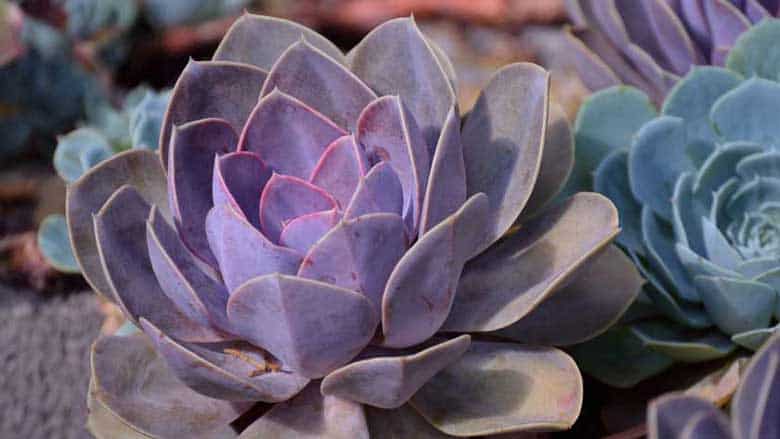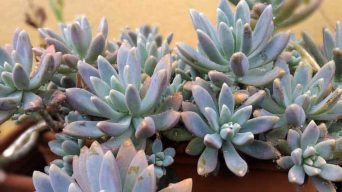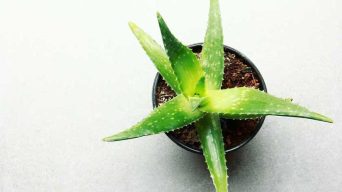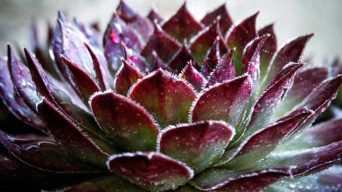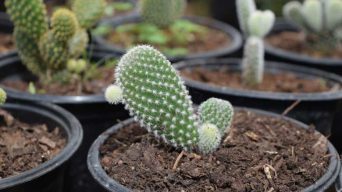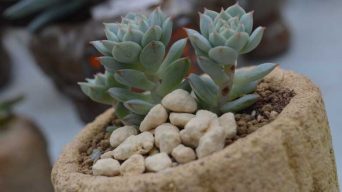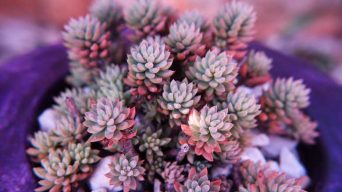Succulent plants are great additions to any garden because they’re low-maintenance, hardy, and come in a wide variety of shapes and colors.
They also propagate beautifully when you give them the proper care. One easy way is using honey as a rooting medium for cuttings.
Propagating succulents with honey is an easy process that you can do at home without special equipment or knowledge.
Here you will find a guide on how to propagate succulents with honey successfully!
What Is A Rooting Hormone?
A rooting hormone is a substance that can stimulate the formation of roots in certain plants. They can be applied to cuttings or seeds for them to sprout roots and grow.
The rooting hormone helps ensure a successful propagation, protects from fungus during the cutting process and makes for more robust roots that make cuttings easier to transplant.
Rooting hormones are often used on plants with difficulty rooting themselves, such as some succulents.
They’re also commonly used among other types like cacti because they require less water than typical flowering garden flowers.
It’s easier when cultivating these particular plant species through seedling propagation methods without using much extra soil around their base.
There are synthetic and natural rooting hormones.
Synthetic Rooting Hormones
Synthetic rooting hormones are human-made and can be applied to seeds or cuttings.
They’re more commonly used on succulents because they need less water than other plants. It’s easier for them when cultivated through seedling propagation methods without using much extra soil around their base.
The synthetic hormone will easily promote root growth with just a little moisture present in nearby dirt particles.
The synthetic hormones are made from a compound called indolebutyric acid, which is similar to auxins.
Synthetic rooting hormone compounds contain no nitrogen and have the advantage of not breaking down quickly when exposed to water or soil.
This allows them to be stored longer than natural substances without losing effectiveness.
Natural Rooting Hormones
Natural rooting hormones are plant extracts or plant oils, such as hormones from tobacco plants.
They are called “natural” because they come directly from a natural product and are not artificially formulated in laboratories like synthetic rooting hormone powders.
Natural rooting hormones are more expensive than synthetics. However some gardeners believe they produce higher quality roots because of the natural ingredients involved in creating them.
Homemade Natural Rooting Hormones
Some ingredients can be found in any home that can be used as natural rooting hormones.
The most common ingredients used as natural rooting hormone are:
- Aloe Vera
- Apple Cider Vinegar
- Cinnamon
- Willow Water
- Honey
Honey as a Rooting Hormone for Succulents
As succulents become more and more popular, propagating them becomes a huge issue.
Many people don’t know that to propagate them successfully, you may need an ingredient often used for rooting plants: honey!
Honey is one of the most popular ingredients used as a natural rooting hormone.
The sugar content contained within honey assists with cell division, which will help develop roots on a cutting or an already rooted succulent plant.
Honey properties also help with the osmotic pressure in a cutting or succulent plant, which will help prevent wilting and rot.
Using raw honey as a rooting hormone is recommended and is the most common way of using honey as an ingredient for natural root hormones.
Raw honey is not the only type of honey that can be used for rooting succulent plants. Pasteurized and organic types are just as effective.
How To Propagate Succulents With Honey
To successfully propagate succulents with honey, you need to follow these easy steps:
Prepare Your Work Area
You will need to clean your work area and make sure it is free from any dirt or contaminants before rooting the succulent cutting in honey.
It can only take one little bit left on this surface for bacteria growths which could kill off all those precious roots down below if not properly cared for.
We don’t want contamination issues anywhere near our cuttings during propagation.
Prepare the Succulent Cuttings
Succulents can be propagated from leaf and stem cuttings from a mother plant.
The best time for this is during the early spring months when new growths are forming or late summer as they enter their dormant period.
Leaf Cutting
For succulent leaf propagation, collect a cutting from an established parent plant, preferably with at least two leaves.
The cuttings should be small and not more than three inches from the ground where it is rooted in its own soil or media.
It’s also important to make sure you’re taking your cuttings just below another node of the healthy leaf.
This allows the proper photosynthesis for the new growths to take place later in the propagation process.
Stem Cutting
Take a cutting from the stem of an established succulent plant, preferably with at least two nodes.
The cuttings should be small and not more than three inches from where it is rooted on its own soil or media.
The main difference between these types is that leaf cuts will have their roots facing upwards. In contrast, stems would face downwards within your propagation container, affecting root growth later in this process.
Dry Out the Cuttings
Place the cuttings on a paper towel with one or more unused dry towels to lay them over.
Leave them there until they are completely dried out.
It can take anywhere between 24 hours up to 72 total depending upon the airflow (or lack thereof) and the humidity present indoors.
Prepare The Honey
Ensure the honey is at room temperature before using it as your rooting hormone for propagating succulent plants.
Place a jar of honey in warm water to liquify it, making the process easier.
Just be sure not to let it get too hot.
Apply Honey to Cuttings
Cut the ends off your succulent cutting just below where it starts to branch and apply a small amount of honey (about one or two teaspoons) into each cut.
The best way is with the fingers since they are softer, but you can also use an object like an ice cream stick.
Be sure not to get any honey on leaves which could cause them to get brown faster when in contact.
So keep away from those areas at first while coating everything else thoroughly before applying more until fully saturated.
Allow For the Succulents Cuttings to Root
Dip the cutting in a clean container and lay it upside down on top of some soil or potting mix.
Water it a little bit and place the container in a bright but not too hot area.
The bottom of your pot should be able to drain out water. It will need about three weeks with morning sun and noon shade location indoors until they start showing signs of roots developing.
Transplant the Baby Succulents
Once you see roots developing from the bottom end through the top (you’ll have a good idea when this is happening), it’s time to plant in potting soil.
Some people might plant their succulents in a pot with drainage holes and fill it halfway.
You can also place the cutting or seedling on top of gravel rocks at the bottom end before adding soil. But ensure there’s some water system that will allow excess moisture to drain.
You can place the newly propagated succulents in a spot that receives bright, indirect sunlight until they are established and ready for full sun exposure (in about three months).
Cooler temperatures also work well if you’re living somewhere where it’s not hot all year round. Just make sure there isn’t any rain or moisture dripping from leaves onto them when this happens!
How Long Does It Take For Cuttings to Root When Propagated With Honey
The best time frame in which a cutting should root with natural propagating hormones is approximately four weeks when using raw honey.
This time frame can be sped up or slowed down depending on the type of plant and its natural root hormone.
If it goes well without any complications, you will have rooted plants ready to go into their new home in just four weeks.
If there was an issue during the process, such as not enough soil being used for water retention purposes, adjust using more potting mix.
If issues persist over two months after propagating cuttings, try another method altogether.
How to Take Care of Newly Propagated Succulents
After you’ve propagated your succulents, taking care of them is important.
As your succulents become established, they’ll need to be watered once a week or so.
A good way to water them is by using a mister because it helps the soil stay moist for longer and that you don’t overwater them.
You’ll also need plenty of sunshine, so make sure they’re in an area that gets at least six hours per day or more if you live somewhere where there isn’t much sun during certain seasons.
The best time frame would be from sunrise until about noon and then again just before sunset.
This can happen even on cloudy winter afternoons since light still reaches their leaves through cloud cover.
They also need to be fertilized every three weeks with a balanced, low nitrogen fertilizer.
A good idea is not to just fertilize on top of your container but all around it as well. Remember that succulents have shallow roots and will require most of their nutrients from contact soil, so you want them in constant coverage!
7 Easy Succulents To Propagate With Honey
Aloe Vera
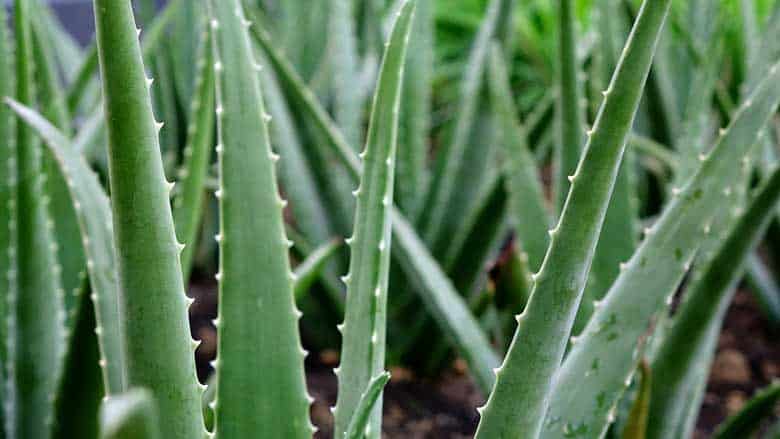
Aloe Vera is a plant that thrives in any climate and can be propagated easily with the help of honey.
While aloe vera plants are not difficult to propagate, using honey as an alternative will ensure success.
Honey provides beneficial bacteria for your air space, so it’s one less thing you have to worry about if things go wrong.
Echeveria

A well-known and beloved species of houseplant are the Echeverias.
These beautiful plants come in different colors ranging from light pink to deep purple and have many textures ranging from smooth silk to slightly fuzzy leaves.
They’re one of the most popular choices among novice plant lovers because they require very little care.
Echeveria is an easy succulent to propagate with honey, making it an excellent choice for beginner gardeners.
Graptoverias
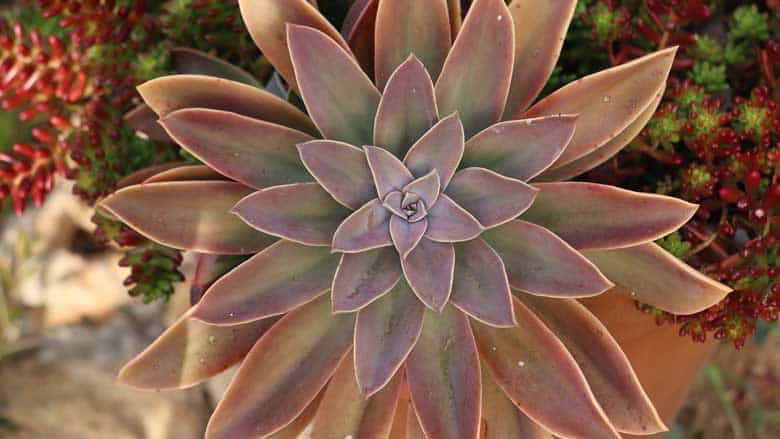
Graptoverias are the perfect plants for succulent beginners. They’re easy to propagate with honey and have an incredible variety of colors that are sure not to disappoint.
You may find these plants in shades ranging from light to dark green.
They also come out as vibrant red or purple color once summer arrives.
Jade Plant (Crassula ovata)
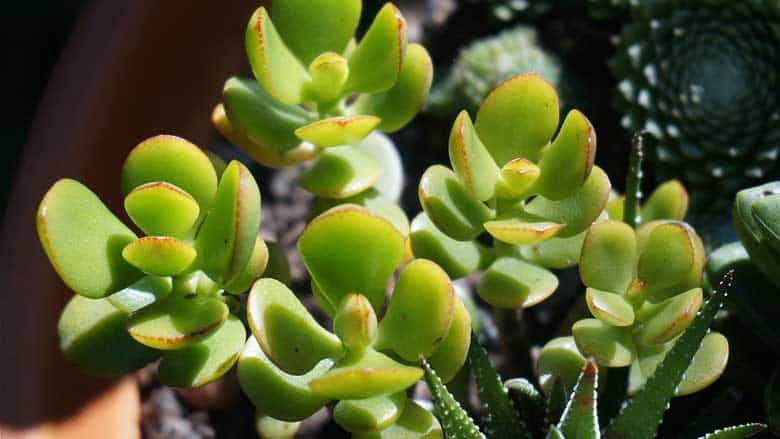
The Jade Plant is a great succulent to try propagating with honey.
They are straightforward to care for and come in a wide range of colors, often seen during winter months due to their ability to survive colder weather conditions.
Jade plants tend to work well with beginners because it’s less likely that you’ll overwater them or expose their delicate roots to too much sun by mistake.
Jelly Bean Plant (Sedum rubrotinctum)
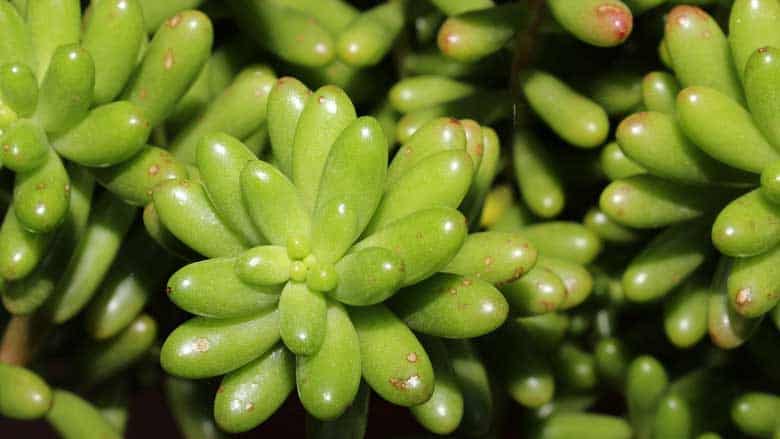
While many succulents can be propagated with honey, the Jelly Bean plant is one of the easiest to propagate at home.
This succulent is native to the deserts of Northern Africa and has small, round leaves with a reddish tint.
The jelly bean plant propagates easily because it can be divided into sections without harming its ability to grow or survive in new conditions.
Kalanchoe (Widow’s-thrill)

The Kalanchoe is a resilient succulent that propagates easily with honey. This succulent can come in a variety of colors, which include the more common reds and deep purples and yellows, or even whites.
The Kalanchoe is one plant that will keep on giving you new plants year after year if properly cared for.
Zebra Plant (Haworthia fasciata)
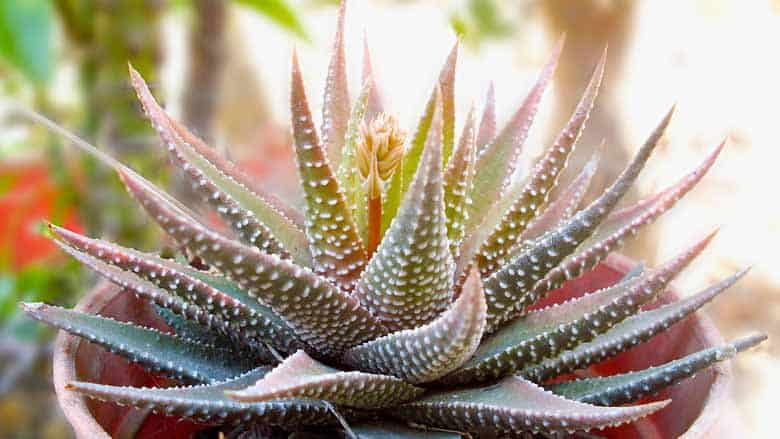
The Zebra Plant is an easy succulent to propagate with honey.
This succulent has long, narrow leaves that grow in clusters from a stem.
The zebra plant is native to the Eastern Cape of South Africa.
Usually, it propagates easily when cut into sections at any point on its stalk.
Final Thoughts
Succulents can be propagated using honey as a rooting medium for cuttings.
Propagating them is an easy process that you can try at home because it requires no special equipment or knowledge.
Propagating succulents is easy and can lead you down the path of having an abundant amount in your home or office.

